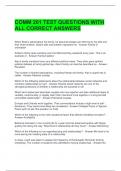PROBLEM SET 1 2024
UNIQUE NO.
DUE DATE: 23 OCTOBER 2024
, ECON 537
PROBLEM SET 1
Unique No.
DUE: Wednesday, October 23rd 2024
Health Economics, Fall 2024
Question 1
Why was the RAND Study Useful for Measuring Price Elasticities of Demand for
Healthcare?
The RAND Health Insurance Experiment (HIE) was a landmark study designed to
measure how different levels of health insurance cost-sharing influenced the demand
for healthcare. It was particularly useful for estimating the price elasticity of demand for
healthcare services due to its experimental design, which relied on the random
assignment of participants to various insurance plans, rather than allowing them to self-
select into plans. This feature addressed several important issues that arise in
observational studies of healthcare demand, particularly self-selection bias, and allowed
for robust causal inferences.
Elimination of Self-Selection Bias
One of the key reasons the RAND study was effective in measuring price elasticities is
that participants were randomly assigned to different insurance plans with varying cost-
sharing structures. In most real-world scenarios, individuals choose their health
insurance plans based on their health needs, risk preferences, and expectations about
future healthcare usage. This leads to self-selection bias, where individuals who
anticipate high healthcare usage are more likely to choose plans with lower out-of-
pocket costs, while healthier individuals may opt for plans with higher cost-sharing but
lower premiums (Newhouse, 1993).


